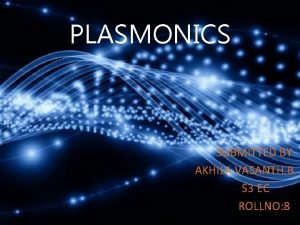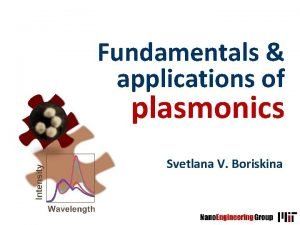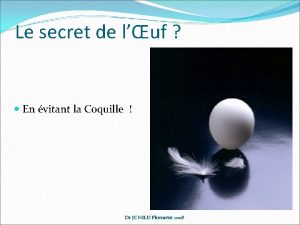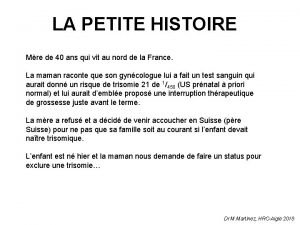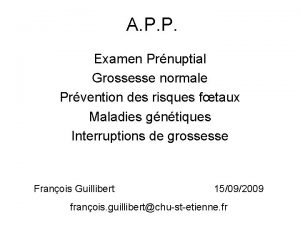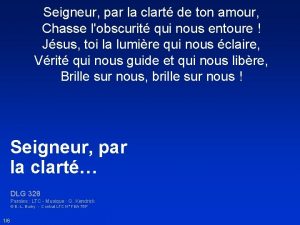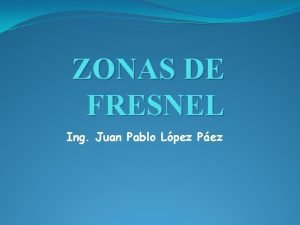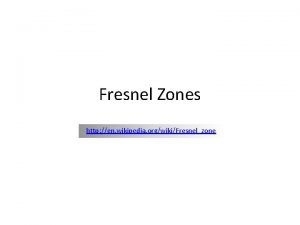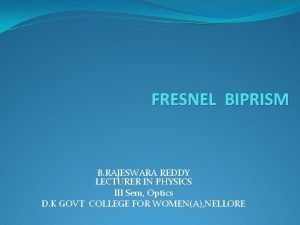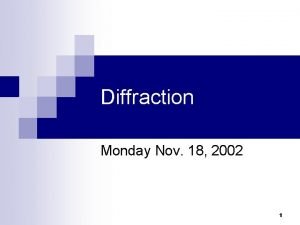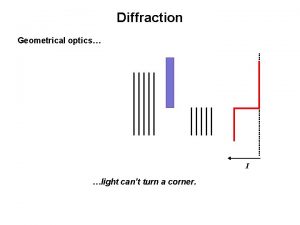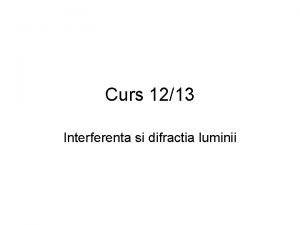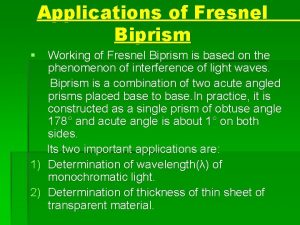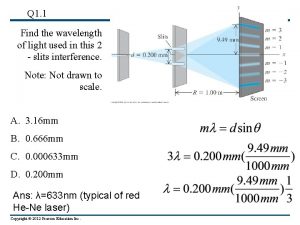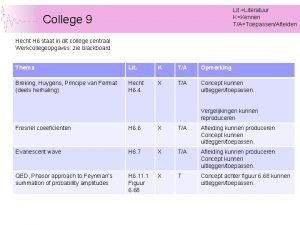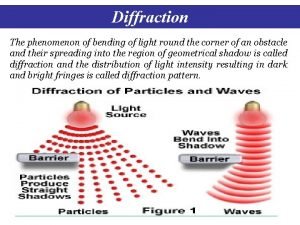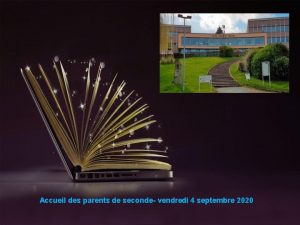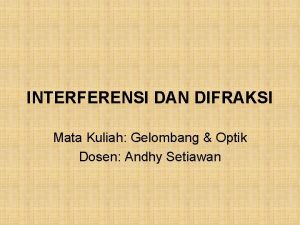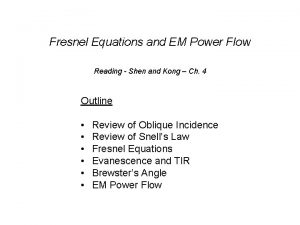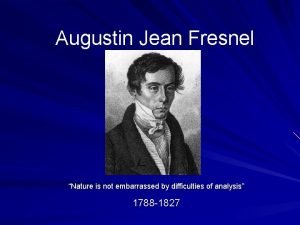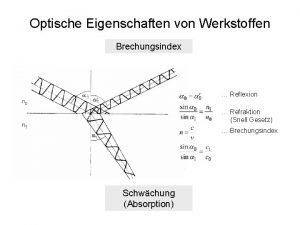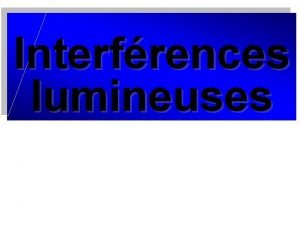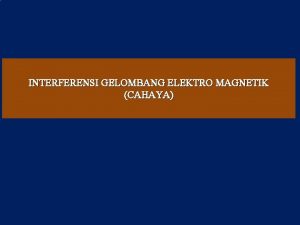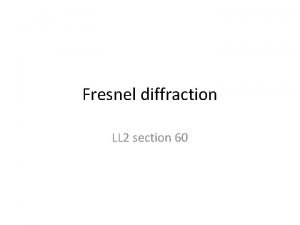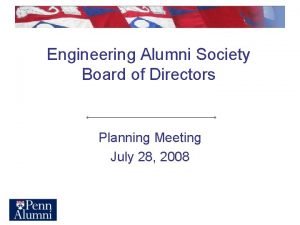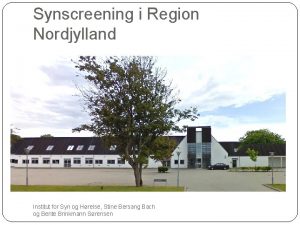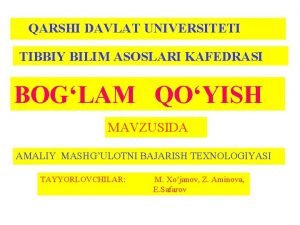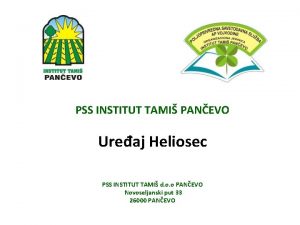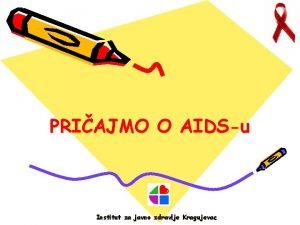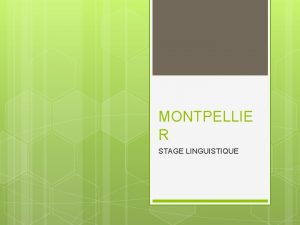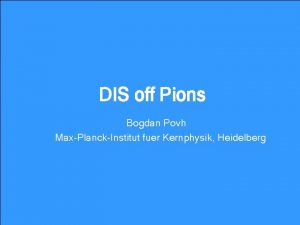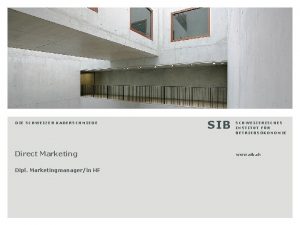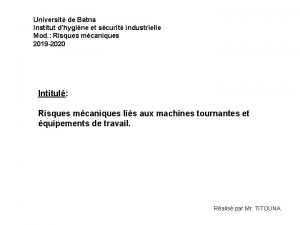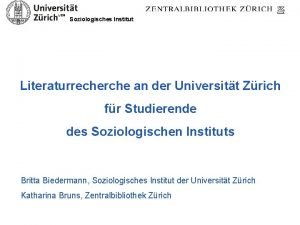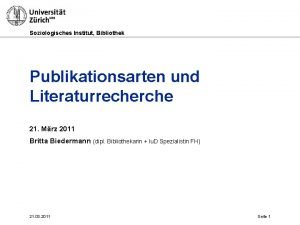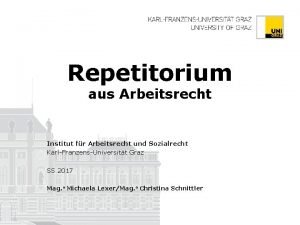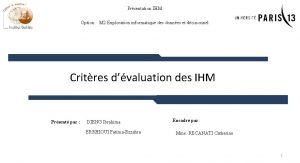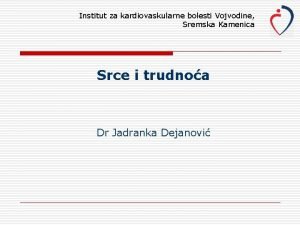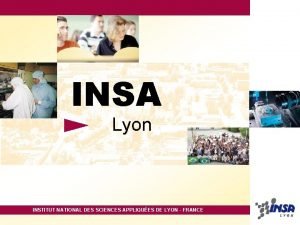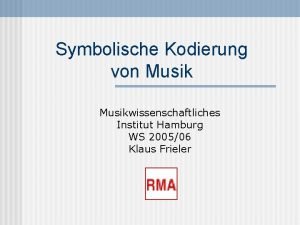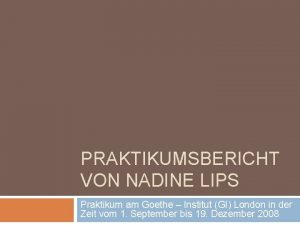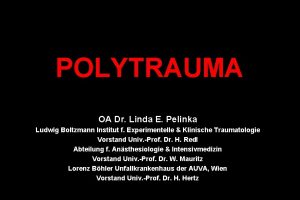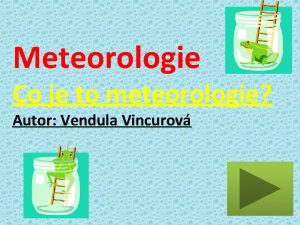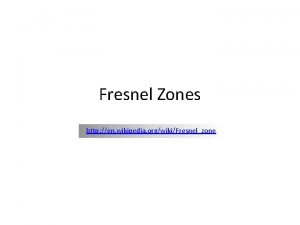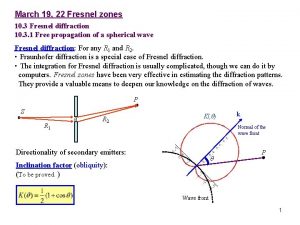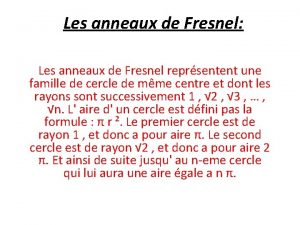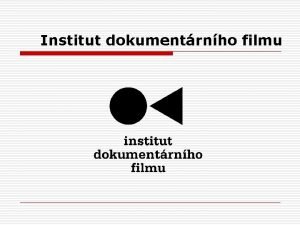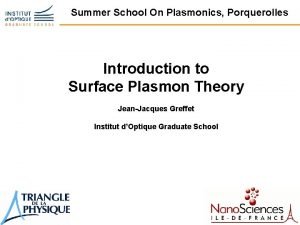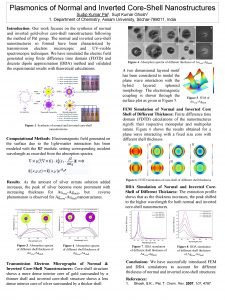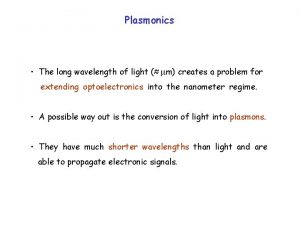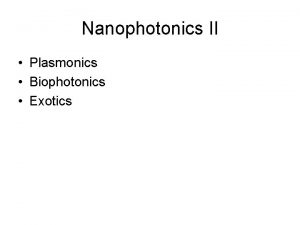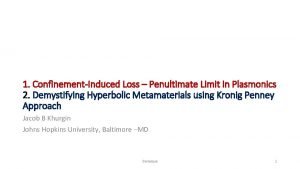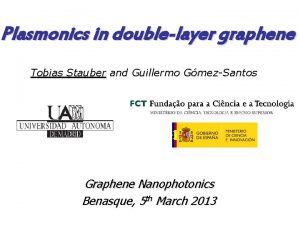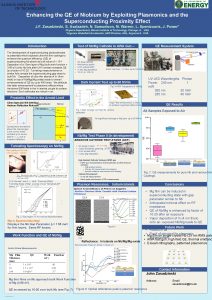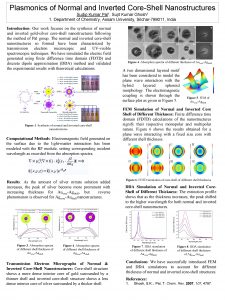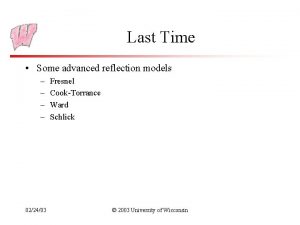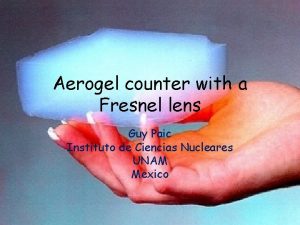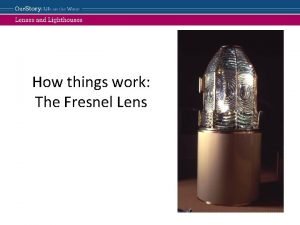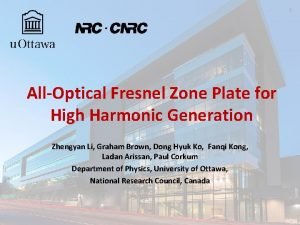Plasmonics History Daniel Maystre Institut Fresnel CLARTE team




































































- Slides: 68

Plasmonics History Daniel Maystre Institut Fresnel (CLARTE team) Domaine universitaire de St Jérôme 13397 Marseille Cedex 20 daniel. maystre@fresnel. fr

« One of the most interesting problems that I have ever met with » R. W. Wood, 1902 Incandescent lamp Spectrometer Ruled grating « I was astounded to find that under certain conditions, the drop from maximum illumination to minimum, a drop certainly of from 10 to 1, occured within a range of wavelengths not greater than the distance between the sodium lines » « The singular anomalies were exhibited only when the direction of electric field was at right angle to the ruling »

Summary - Experimental and theoretical analyses of Wood anomalies: a survey - What is a surface plasmon? (polariton, plasmon-polariton): flat interface, grating - Why surface plasmons generate Wood anomalies? Phenomenology, total absorption of light by a grating - Extraordinary transmission through subwavelength holes - Plasmonics and metamaterials - Plasmonics and near field microscopy - Coherent thermic emission of light - Surface plasmons on non-periodic surfaces: enhanced backscattering, Anderson localization of photons.

Wood anomalies: a survey 4

First explanation: Rayleigh, 1907 « I was inclined to think that the determining circumstance might perhaps be found in the passingoff of a spectrum on higher order » Rayleigh observed small but significant discrepancies between the actual locations of anomalies and those deduced from his prediction but explained these discrepancies by a bad knowledge of the grating period

New experimental data for various metallic gratings, J. Strong, 1936 He showed Wood anomalies for various metallic gratings. The results implicitely showed the influence of the metal on the location and shape of the anomalies In contradiction with Rayleigh conjecture!

The theoretical breakthrough: U. Fano (1941) « One may distinguish two anomalies: - A sharp anomaly, that is, an edge of intensity, governed by a relation discovered by Rayleigh - A diffuse anomaly extends for a wide interval from the edge towards the red and depends upon the optical constants » Fano explained the diffuse anomaly by a « forced resonance » related to the « leaky waves supportable by the grating »

Hessel and Oliner, 1965 They confirmed the conclusions of Fano and tried to propose a numerical demonstration of the existence of a diffuse anomaly. In fact, the modeling tool was based on an impedance approximation and was unable to provide reliable quantitative results.

J. Hägglund and F. Sellberg, 1965 They compared their experimental measurements on various metallic gratings with numerical results deduced from the Rayleigh expansion method. Unfortunately, when the numerical results converged, the agreement with experimental data was only qualitative (location of anomalies)

End of 60’s and begining of 70’s: a double revolution 1 - Technology and experimental tools: Use of laser sources and photoresist layers permitted the discovery and construction of holographic gratings (D. Rudolph and G. Schmahl, 1967, A. Labeyrie and J. Flamand, 1969). For the first time, the holographic technology provided a rapid and accurate tool for constructing gratings with sub-micronic periods

End of 60’s and begining of 70’s: a double revolution 2 - Theory: The opportunity of using the first powerful computers and the strong development of the rigorous electromagnetic theory of gratings made it possible wide numerical studies of Wood anomalies and allowed the first successful quantitative comparisons between experiments and theory.

D. Maystre and R. Petit, 1972, 1973 I elaborated a rigorous integral theory of scattering from metallic diffraction gratings including the representation of the metal properties by its optical index, in contrast with the perfect conductivity model. The first results showed: - For s polarized light, the numerical efficiencies of the actual metallic grating deduce from those assuming a perfect conductivity of the metal through a multiplication factor close to the reflectivity of the metal plane. - For p polarization, strong discrepancies appear.

Crucial consequence Even though metals used to make gratings (Al, Ag, Au…) present high reflectivities in the visible and near IR, the model of perfect conductivity fails, at least for p polarized light (and then for natural light). Unfortunately, this numerical demonstration was not considered as a definitive proof (ICO IX, Santa Monica, 1972).

M. C. Hutley, 1973 M. C. Hutley and V. M. Bird, 1973 Hutley constructed holographic diffraction gratings, measured their profiles (profilometer = chisel shape stylus) and their efficiencies in different orders for various incidences, wavelengths, metals, profiles. Comparing his results to theoretical data deduced from a theory assuming the metal to be perfectly conducting, he noticed: -For s polarized light, the experimental efficiencies deduce from the numerical ones through a multiplication factor close to the reflectivity of the metal plane - For p polarization, strong discrepancies appear. - He invoked 3 possible reasons to explain these discrepancies.

Conclusion: strong discrepancies observed for p-polarization between: - The perfect conductivity model for gratings -The finite conductivity model or the experimental measurements. Two possible explanations: 1 - The failure of the perfect conductivity model 2 - The failure of Maxwell equations and macroscopic theory of scattering for modeling the real properties of metallic gratings (it could be necessary to use a microscopic model of Solid State Physics) Does Electromagnetic scattering model fail in Optics?

R. C. Mc Phedran and D. Maystre, 1974 Incident beam -1 st order efficiency 0. 5 s polar. 0 -20 0 th order Incidence angle (deg. ) 0 20 40 total efficiency +1 order grating Holographic grating with period 1205 nm illuminated for p polarization by a laser beam with l=521 nm p polar. 0. 5 0 -20 -1 st order Incidence angle (deg. ) 0 20 experimental data theory: Ag grating theory: PC grating 40 Profile 1000 nm silver

Quantitative phenomenological theory (D. Maystre, 1973) The results given by the integral theory of gratings were confirmed by the differential theory (M. Nevière and P. Vincent, 1974), even though this theory had strong problems of stability for metallic gratings. Thus, the new opportunity to perform rapid and accurate computations of grating properties encouraged us to develop a quantitative phenomenological analysis of Wood anomalies. Phenomenology: using intuition then mathematics in order to describe quantitatively a phenomenon from the smallest number of parameters It allowed the discovery of the phenomenon of total absorption of light (Maystre and Petit, 1976, Hutley and Maystre, 1976)

What is a surface plasmon? : 1 - Surface plasmon on a flat interface 18

Surface plasmon on a flat interface y air Conducting material x Complex amplitude with time dependence in (optical index n) A polarized surface wave conditions: must satisfy the following - Propagation in x: - Maxwell equations at any point and boundary conditions at y = 0 - Radiation condition: 19

Question: can a be real? If the surface wave propagates towards on the surface of a conducting dissipative material , its amplitude should decrease (in modulus) as x increases. Thus a must be complex with We will assume that : the surface wave can propagate at a distance before extinction. 20

Maxwell equations in the air Helmholtz equation: We must define the determination of in order to impose the radiation condition 21

Determination of Vanish as For complex a, the determination of b is given by propagates upwards 22

Maxwell equations in the conducting material Imposing The radiation condition is satisfied by keeping the same determination for g as for b 23

Calculation of a Propagate along the x-axis and satisfies: - Maxwell equations in both materials -Radiation condition -Last condition: boundary condition on the interface: continuity of the tangential components of the electric and magnetic fields at y = 0 24

Determination of a, s polarization, F electric field Impossible! 25

Determination of a, p polarization, F magnetic field Surface wave: surface plasmon 26

Calculation of a for a metal in the visible region Aluminum at 647 nm: n = 1. 3+i 7. 1 1 - The surface plasmon can propagate at large distance before extinction Real part slightly greater than unity 2 - Since the real part of the propagation constant is greater than k, the surface plasmon cannot be excited by a plane wave Very small imaginary part 27

Why a surface plasmon cannot be excited by a plane wave coming from the air? Incident plane wave -k y x +k The x-component of the propagation constant is conserved, thus the plasmon cannot be excited by a plane wave in the air 28

How to excite the surface plasmon? 29

1 - Use of an electron beam (C. J. Powell and J. B. Swan, 1959) Striking thin films of metal with an electron beam, it has been observed peaks of absorption in the energy spectrum of the transmitted beam. These losses are due to the collective excitation of conduction electrons at the surface of the metal. This is the description of surface plasmons in Solid State Physics. In the following of this talk, this microscopic interpretation of the existence of surface plasmons is ignored. Question: How to describe a phenomenon caused by a collective resonance of electrons without electrons? 30

2 - Use of a prism Incident beam inside the dielectric -k +k y x Dielectric (n’) The prism multiplies the x-component of the propagation constant of the incident plane wave by a factor n’ 31

2 - Use of a prism: numerical calculation l = 647 nm q Minimum at q = 44. 55 n’sin(q)=1. 017 Fused Silica (n’=1. 45) Al (30 nm) 32

3 - Use of a grating, heuristic presentation Incident field: -k Scattered field: q y +k q 0 +1 evanescent order x Conducting d material 33

What is a surface plasmon? : 2 - Surface plasmon on a grating 34

Grating: description of the surface plasmon Floquet-Bloch theorem: a surface wave propagating along the grating surface takes the form: y x d Conducting material 35

Use of Maxwell equations and radiation conditions y x Continuity: 36

Phenomenology: why surface plasmons generate Wood anomalies? 37

The scattering problem y x Normalized amplitudes Field of surface plasmon = field of a scattering problem, but with a = 0 and a complex 38

Vital consequence -1 +1 The normalized amplitudes and being considered as functions of real , the constants of propagation of all the space components of the surface plasmon are poles of the analytic continuation of any normalized amplitude in the complex plane of : When becomes close to one of them, a resonance phenomenon occurs 39

q Particular case is the pole of all the -1 +1 and in particular of 40

Phenomenological theory: crucial result If , If h=0, the pole and the zero cancel out each other thus r is close to the reflection coefficient of the metallic plane 41

Numerical search for poles and zeros The numerical tools based on rigorous methods of scattering from gratings have been extended to complex values of in order to compute numerically the location of poles and zeros in the complex plane Example: M. C. Hutley and D. Maystre, 1976: Sinusoidal gold grating with a period d=555. 5 nm, Illuminated with p polarized light of wavelength 647 nm. For small incidences, the only non-evanescent order is the zeroth order. 42

Trajectory of the pole and of the zero of when the height h of the sinusoidal grating is increased Imaginary pole h (nm) axis 10 -2 -0. 11 -0. 12 zero 0 Real 0 axis -10 -2 43

Comparison between the calculated efficiency in the zeroth order (crosses) and the phenomenological formula (circles) for h = 50 nm E 0 44

Quantitative phenomenology: Total absorption of light by a grating 45

Total absorption of light If crosses the real axis of a for h=h 0 then an incident plane wave with angle of incidence will be absorbed in totality Theoretical prediction for a sinusoidal gold grating at 647 nm: h 0=40 nm for (Maystre and Petit, 1976) 46

Numerical results: d=555. 5 nm h 0=40 nm for Efficiency in the zeroth order (only order) Verification on a sinusoidal grating (Hutley and Maystre, 1976) h (nm) Experimental data: d=555. 5 nm, for h 0=37 nm and the measured efficiency in the zeroth (specular) order was 0. 5% A very gentle undulation in the surface of a gold mirror causes the reflectance to fall dramatically from over 90% to 0 (theory) or below 1% (exp. ) 2. 4. 6. 8. Angle of incidence (deg. ) Application: virus detection 47

A strong consequence of the phenomenological formula Width at half-height of the absorption peak: 2 Im(a P ) Extinction length proportional to Since the imaginary part of a P increases with the height of the grating, the surface plasmon becomes more and more localized and the width of the absorption peak is increased (example of localized plasmons: see T. V. Teperik et al. , Nature Photonics, 2008) 48

Coherent thermal radiation See J-J. GREFFET and C. HENKEL Contemporary Physics, Vol. 48, No. 4, July – August 2007, 183 – 194 The figures on this subject were kindly provided by J. J. Greffet 49

Density of energy near a Si. C-vacuum interface z T=300 K 50

Origine of the phenomenon, coherence of the near field At a given temperature, it can be shown that surface plasmons can spontaneously propagate at the surface of a conducting material around a given frequency. As a consequence, in contrast with the far field, the near field is nearly monochromatic. It is spatially and temporally strongly coherent. Replacing the flat surface by a grating, the surface plasmons are scattered at infinity around given directions. In these directions, the far field is strongly coherent 51

Emission pattern of a Si. C grating Green line : theory Red line : measurement J. J. Greffet et al. Nature 416, p 61 (2002) The emission pattern looks like an antenna emission pattern. The angular width is a signature of the spatial coherence. 52

Plasmons on randomly rough surfaces 1 -Enhanced backscattering (weak localization) 53

Device RMS: mean height Correlation length: mean width of the grooves 54

Numerical results for the mean intensity on 100 realizations (D. Maystre et al. , 1995) s polar. l=3392 nm Material: Gold Mean p polar. q=0° intensity RMS=1950 nm q=10° Correlation length = 3570 nm q=30° Backscattering angle -90 -30 0 30 90 Scattering angle 55

Heuristic interpretation 1 2 Air The emerging secondary fields are not in phase in an arbitrary direction Metal The emerging secondary fields are in phase in the backscattering direction 2 1 (reciprocity for reverse paths) Enhancement by less than 2 56

Case of a very flat surface with moderate correlation length p polarization: mean intensity on 100 realizations q=10° q=30° Ag , l=400 nm, RMS=8 nm, Correlation length=100 nm, 57

Heuristic interpretation Emerging rays 1 and 2 are in phase in the backscattering direction 2 1 Surface plasmons Ag, l=400 nm, RMS=8 nm, Correlation length=100 nm, 58

Remark: Enhanced backscattering by a set of particles 2 Set of particles 1 This phenomenon has a vital importance in radar observation or propagation of laser beams in turbulent media Observation in every day life: - bright halo (glory) around the shadow of an airplane onto a cloud layer 59

LEE Boon-Ying Hong-Kong University 60

G. Tayeb Institut Fresnel IDDN. FR. 0107172. 000. R. P. 2006. 035. 41100 61

62

Plasmons on randomly rough surfaces 2 -Anderson localization (strong localization) P. W. Anderson, 1958 63

Numerical experiment (D. Maystre et al. , 1995): reflection and transmission of a surface plasmon by a randomly rough surface 100 realizations, l = 436 nm, correlation length= 65 nm, RMS= 14 nm 10 000 nm 64

The greatest transmission on 100 realizations R= 2. 2% 1 T=62% 65

The smallest transmission (and reflection) Resonance effect: large absorption, large radiation R= 0. 15% 1 T=3% 66

Interpretation In some parts of the surface, the local system of interference may be constructive, in such a way that the field becomes very strong and remains localized inside this region of resonance strong localization Strong absorption and strong radiated field 67

Thanks for your attention 68
 Plasmonics seminar ppt
Plasmonics seminar ppt Cscatt
Cscatt Clarté nucale normale tableau
Clarté nucale normale tableau Facies trisomique
Facies trisomique 14 sa en mois
14 sa en mois Brille o jesus
Brille o jesus Zona de fresnel
Zona de fresnel Barnett vignant equation
Barnett vignant equation Fresnel clearance formula
Fresnel clearance formula Fresnel biprism
Fresnel biprism Fresnel
Fresnel Fresnel and fraunhofer diffraction
Fresnel and fraunhofer diffraction Diffraction by circular aperature
Diffraction by circular aperature Oglinda lloyd
Oglinda lloyd Applications of fresnel biprism
Applications of fresnel biprism Diffraction through single slits derivation
Diffraction through single slits derivation Fresnel coefficients
Fresnel coefficients Principal maxima and secondary maxima
Principal maxima and secondary maxima Nero educ de normandie
Nero educ de normandie Biprisma fresnel
Biprisma fresnel Fresnel equations
Fresnel equations Augustin-jean fresnel siblings
Augustin-jean fresnel siblings Feldstärke
Feldstärke Avance de phase
Avance de phase Percobaan fresnel
Percobaan fresnel Compact linear fresnel reflector
Compact linear fresnel reflector Linear fresnel
Linear fresnel Fresnel biprism wikipedia
Fresnel biprism wikipedia Farnia fresnel
Farnia fresnel Going native project management
Going native project management Team spirit becomes team infatuation
Team spirit becomes team infatuation The white team cheers for the blue team, just like
The white team cheers for the blue team, just like Wayne rooney trophy cabinet
Wayne rooney trophy cabinet Dodging in handball
Dodging in handball Institut francesc ferrer i guardia
Institut francesc ferrer i guardia Institut for syn og hørelse
Institut for syn og hørelse Goethe institut dublin
Goethe institut dublin Qattiq bog'lam turlari
Qattiq bog'lam turlari Pss institut tamiš pančevo
Pss institut tamiš pančevo Institut za javno zdravlje kragujevac
Institut za javno zdravlje kragujevac Institut linguistique du peyrou montpellier
Institut linguistique du peyrou montpellier Peranan pegawai pengiring
Peranan pegawai pengiring Institut tadbiran awam negara bina ayat
Institut tadbiran awam negara bina ayat Poeta maragall high school
Poeta maragall high school Institut paoli calmettes
Institut paoli calmettes Institut joan oliver
Institut joan oliver Gradski zavod za javno zdravlje beograd
Gradski zavod za javno zdravlje beograd Zitierregeln geographisches institut kiel
Zitierregeln geographisches institut kiel Institut für kernphysik
Institut für kernphysik Betriebsökonomie definition
Betriebsökonomie definition Llmena
Llmena Institut d'hygiène et sécurité industrielle batna
Institut d'hygiène et sécurité industrielle batna Uzh soziologisches institut bibliothek
Uzh soziologisches institut bibliothek Publikationsarten
Publikationsarten Arbeitsrecht institut
Arbeitsrecht institut Tamidoo
Tamidoo Institut galilée
Institut galilée Logo jabatan pertanian sarawak
Logo jabatan pertanian sarawak Fda klasifikacija lekova u trudnoci
Fda klasifikacija lekova u trudnoci Institut national des sciences appliquées founded
Institut national des sciences appliquées founded Ifak institut gmbh & co. kg
Ifak institut gmbh & co. kg Aprenentatge multinivell
Aprenentatge multinivell Uni kiel sportwissenschaft
Uni kiel sportwissenschaft Musikeinführung
Musikeinführung Kundenbetreuung
Kundenbetreuung Ludwig boltzmann institut traumatologie
Ludwig boltzmann institut traumatologie Institut national d'oncologie rabat
Institut national d'oncologie rabat Co je to meteorologie
Co je to meteorologie Institut za oceanografiju plima i oseka
Institut za oceanografiju plima i oseka
